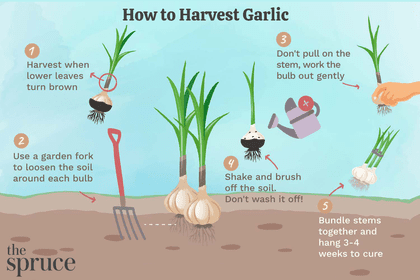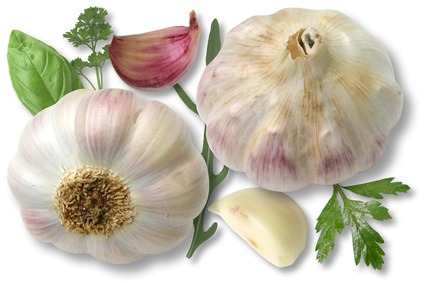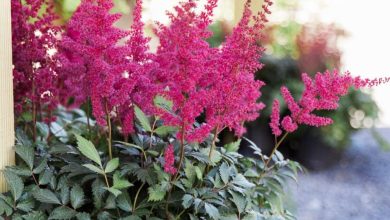How to Grow Garlic in the Garden: From Planting to Harvest

Today I will give you some tips on how to grow garlic in the garden. In the Northern Hemisphere we are in Autumn, so this post will be perfect if you are starting to plan your garden with winter crops like this one.
Garlic or Alium sativum is a bulbous vegetable of the Liliaceae family, like onions, chives or leeks. It is undemanding and easy to grow. Let’s see how to do it!
benefits of garlic
Characterized by its strong and slightly spicy flavor, in addition to being a basic ingredient in Mediterranean cuisine, it is also used in dishes from other parts of the world as a condiment or raw in vinaigrette.
It is good for health and is highly appreciated nutritionally for its high content of mineral salts and vitamins.For this reason and for its antibiotic and antifungal properties, garlic is used as a medicinal and healing plant, and is also used in Organic Farming for the preparation of home remedies for garden problems, such as the ones we saw in the post 3 natural remedies against pests and diseases.
Climate and soil suitable for growing garlic
Garlic is a very undemanding vegetable, which does not require a very moist or nutrient-rich soil (it will not need to be fertilized).
Although it requires a lot of sun, it is not demanding in terms of temperature, withstanding cold weather well (by the way, they say that the colder it is, the hotter the garlic will be).
Plant garlic: when and how
They are planted by directly burying the garlic cloves in the ground. You can start planting them from mid-autumn (October-November in the northern hemisphere), although late plantings can also be done a few months later.
You should not use the small cloves from the center of the bulb, but rather those from the outside (and not the garlic cloves from the supermarket because they normally do not bear fruit, use garlic harvested from a garden or buy them at seed centers or other specialized centers).
Separate the different cloves of garlic from the bulb just when you are going to plant, and bury them with the pointed part facing up to a depth of about 3-5 cm (depending on how big the bulb was). Leave a distance between teeth of more than 10 cm and between the rows leave 25-30 cm.
If you have a flowerpot, you can include garlic in it: there is no problem growing it in pots.A 15 x 15 cm pot will suffice for a clove of garlic.
Favorable and unfavorable associations of garlic with other garden plants
Garlic associates well with almost all plants in the garden and is beneficial because it repels some insects that can become pests, such as carrot flies or aphids. It also helps prevent fungi such as mildew, strawberry rot and diseases that can affect tomatoes (if you want more effectiveness you can make homemade preparations with garlic to avoid these pests and diseases).

For all this, the association of garlic with carrots, tomatoes, strawberries and many other garden plants is possible and recommended. Another good combination is that of garlic and onions with lettuce, chard or beets, etc. since it will help you take advantage of the space: all these crops grow horizontally and the garlic vertically (this is another of the criteria that we saw in the post Association of crops to choose the associations of our garden).
The only crops that don’t associate well with garlic are legumes like beans.
Necessary irrigation for garlic
It is not very demanding, it will suffice to water it in spring and early summer during dry periods, since this is the moment of formation of the bulb and that is when it needs more water.
When the leaves begin to dry, do not water it to prevent it from rotting and to collect it as dry as possible.
Pests and diseases of garlic
Garlic does not usually have many problems with pests and diseases (I already told you that it is easy to grow and this is one of the reasons).
They can be affected by some fungi such as onion white rot, rust or botrytis, but if you have good management and preventive actions against fungi in the garden you will not have any problem. Also the onion fly, the weevil or nematodes can affect it but it is not very common, in any case it is better that you are prevented.
Cultivation work
It is advisable to weed from time to time and leave a very soft soil so that the bulb grows without difficulty and also to fight against weeds (due to its small size, competition between garlic and these plants can be a problem).
There is also a very widespread practice that is the treading or tying of garlic: it consists of making a knot with the aerial part of the plant or stepping on it, crushing it against the ground.
This is done almost at the end of the crop so that the water and nutrients are not wasted going to the leaves and remain more concentrated in the lower part, where the bulb is, which is what interests us.
Garlic harvest or collection
In late spring or summer, when the garlic is ready, the leaves will begin to dry and turn yellow. When they are completely dry you can dig up the garlic (with the help of a shovel if the soil is very compacted). Remove all roots, soil, and leaves and spread them out on a tray to dry thoroughly before storing.


![Photo of Temperate Continental Climate: [Characteristics, Flora, Fauna and Adaptability]](https://www.complete-gardening.com/wp-content/uploads/2022/08/temperate-continental-climate-characteristics-flora-fauna-and-adaptability-390x220.jpg)
![Photo of Marjoram: [Cultivation, Irrigation, Associations, Pests and Diseases]](https://www.complete-gardening.com/wp-content/uploads/2022/08/marjoram-cultivation-irrigation-associations-pests-and-diseases-390x220.png)
![Photo of Lantana Cuttings: [Grafts, Time, Rooting and Planting]](https://www.complete-gardening.com/wp-content/uploads/2022/08/lantana-cuttings-grafts-time-rooting-and-planting-390x220.jpg)